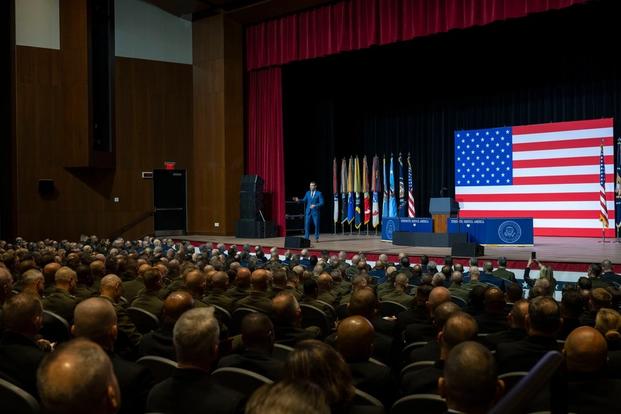At Quantico today, President Donald Trump and Secretary of War Pete Hegseth told hundreds of America’s senior officers that the era of “politically correct” leadership is over. The optics were clear. It was a rare mass gathering of generals and admirals, summoned to hear a sharp course correction. Trump’s line, “We will not be politically correct when it comes to defending American freedom”, landed like a gavel strike, setting the tone for Hegseth’s harder edge.
Hegseth followed with a vow: “The era of politically correct, overly sensitive don’t-hurt-anyone’s-feelings leadership ends right now at every level.” He coupled that with promises of stricter standards, a purge of what he casts as “woke” policies, and a warning shot to reluctant leaders. Officers who disagreed were encouraged to resign.
What Does This Mean for the Military?
There’s no question the military is in a standards conversation. Recruiting has been a grind where military services have experimented with waivers and adjusted fitness tests, and commanders have juggled readiness and discipline. Military.com has traced these currents for years, including the GOP’s platform posture on “woke” reforms, and, more recently, the administration’s rebranding and refocus of the Department of Defense to the Department of War.
But cutting through slogans matters. If “ending political correctness” means returning to clear, rigorously enforced standards that map to combat tasks, you’ll find few in uniform who object.
Reports noted the room’s restraint and that stoicism wasn’t rudeness, it was professionalism. The fact that America’s senior officers kept their bearing is exactly what we expect of them.
On the policy front, the administration’s rollback of DEI offices and book removals at academies is already in motion. Supporters argue these steps restore merit, where critics warn they risk shrinking the talent pipeline and trust. The public record shows the scope of change is actual, not rhetorical.

How Do We Know if it Will Work?
What does research say? It’s mixed (and that is noteworthy). A recent study suggests demographic diversity alone has, on average, small or inconsistent links to team performance, while task-related diversity and cohesion tend to drive outcomes more reliably. RAND’s work likewise emphasizes that how diversity is leveraged (with clear standards and mission focus) matters more than slogans at either extreme. The naval profession’s own journals continue to underline cohesion as a warfighting advantage. In short: standards, clarity, and cohesion win.
| Team Diversity Pros/Challenges: | |
| Pros | Challenges |
| Richer Information: better problem solving on complex tasks. | Lower Early Cohesion: teams take longer to gel, especially with subgroups. |
| More Creativity/Innovation: more (and fresher) ideas. | More Relationship Conflict: friction if norms for debate aren’t clear. |
| Better Decisions: when input is structured (briefs, backbriefs, clear rules). | Higher Coordination Cost: misunderstandings, jargon, language/culture gaps. |
| Less Groupthink: assumptions get challenged; risks spotted sooner. | Process Delays: unclear roles/handoffs slow execution. |
Civil-military lines, meanwhile, are not academic niceties. They’re guardrails. When a Commander in Chief uses a captive audience of uniformed leaders to test novel views like using troops in U.S. cities for training, that opens the institution to potential risk. It invites questions about legal boundaries (think Posse Comitatus), chain-of-command pressures, and the public’s trust in a nonpartisan force.
Where Do We Go From Here?
So where does that leave the rank and file, and importantly, the leaders who will carry today’s message down the chain? Here’s where an old word does real work: muster. In the military, to muster is to assemble the unit for accountability, inspection, and orders. It ensures that everyone is present, understands the standard, and knows the mission. Done well, mustering isn’t pageantry. It is communication discipline. You pull the formation together, deliver the commander’s intent in plain language, check understanding, and set expectations. Then you train to the standard you just articulated.
We should be honest about what changed today and what did not. It changed the language from the top: unmistakably. It advertised a coming wave of policy shifts on standards, personnel management, and education. What it didn’t change is the timeless equation for combat effectiveness: clear standards + tough, fair enforcement + cohesive teams that trust their leaders. If the “end of political correctness” sharpens standards, trims bloat, and recommits units to a common, lawful purpose, then the rhetoric will fade and the results will speak.
Leaders at every echelon can set the tone now. Muster your troops. State the standard. Strip away the culture-war flourishes and explain the “why” in mission terms: readiness, lethality, discipline, and dignity. Then enforce it evenly. The American people don’t need a politicized military; they need a deadly-serious one that passes muster: in training, in combat, and in the trust it keeps with the nation it serves.














